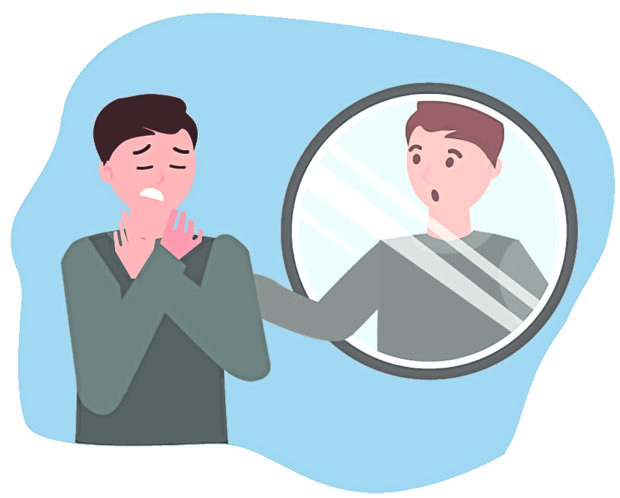
Are you choosing your excuses over your growth? Are you gravitating toward what’s comfortable and familiar over what’s new and awkward? These are just some behaviors that may fall under self-sabotaging patterns.
The term “self-sabotage” is quite interesting because we all have the natural instinct to protect ourselves and stay away from pain. And yet sometimes, protecting ourselves means we protect our wounds and traumas, which keep us from healing them and moving away from them.
Self-sabotaging patterns defy logic because we do things that are the opposite of what we say we want.
It may look like eating unhealthy high-calorie food that you’ve vowed to stay away from if you’ve been trying to lose weight.
If you’re saving up money, it will look like impulsive purchases that you don’t need and regret later on.
In relationships, it will look like getting attracted to abusive partners, cheaters and emotionally unavailable people. It will feel like wanting to stay in a relationship that you already know you don’t want to be a part of, only because it feels familiar.
Most times we know what we need to do, and yet we aren’t able to do it.
Self-sabotaging patterns
As human beings, we tend to live in patterns. Science says that 40 percent of what we do is on autopilot. While this preserves a lot of energy and mind space, this also means there’s a higher probability for us to repeat the same mistakes over and over again, until we become aware of our patterns and intentionally change them.
Research shows that women who have alcoholic fathers are twice as likely to marry alcoholic spouses, too. We tend to create what is familiar, even if it’s painful and even when we know what’s wrong.
Self-sabotaging patterns are a mechanism for us to make real what we think and believe about ourselves, our lives and what we deserve. As the quote from the movie “The Perks of Being a Wallflower” goes: “We accept the love we think we deserve.”
People who, deep down, don’t believe they are worthy of being loved are likely to reject people who love them as they are. They’re likely to end up with partners who are unavailable, who treat them as inferior and to whom they’ll repeatedly need to prove their worth.
Henry Ford once said, “Whether you think you can or can’t, you’re probably right.” Our body makes real what we believe in. Our lives reflect what our inner world looks and feels like.
How to get out of it
How do you know if you are in it? As self-awareness is key, the first step is to pause and make space for reflection and connecting the dots. The life that you have is the outcome of your decisions, your mindset, thinking patterns and emotions. What area in your life have you not grown in, whether it’s in how you show up as a leader, how a specific type of person triggers you or the romantic partners you tend to choose? An area to look into is if your circles haven’t expanded over the years. If the only perspectives you surround yourself with are the same as yours, you might be preventing growth from happening. If you tend to shun people who think differently from you, look into that as well.
Are you sounding like your parents when you said you’d never be like them? Are you making people feel the things you hated feeling when you were growing up? These could be indications that we are reliving the past in some form, sometimes taking on a different role. Having a common theme on disagreements you have with different people across the years also suggests a pattern.
Understand how you do things so you can interrupt the automatic. Ask the people around you whose judgment and intentions you trust. Things that are invisible to us are usually obvious to others.
Allow yourself to explore where and when in your life you’ve seen, heard and felt these situations. Having a trusted friend, loved one or a coach could help you sort it out. Many times, just being able to name and acknowledge a pattern substantially reduces or reverses it immediately. We can’t control what we don’t know, and once we become aware of our own thoughts and actions, they start to be within our realm of control.
When getting out of self-sabotaging patterns, what is counterintuitive is what we need to learn to do. Many times, what is familiar is unhealthy. Explore different kinds of thinking, emoting and showing up to the world. Explore who else you can be to discover your best self yet.
—CONTRIBUTED
The author is an executive coach and organization consultant. If you have relationship- and career-related issues and questions that you want her to tackle in these pages, email her at coachsheila.tan@gmail.com.